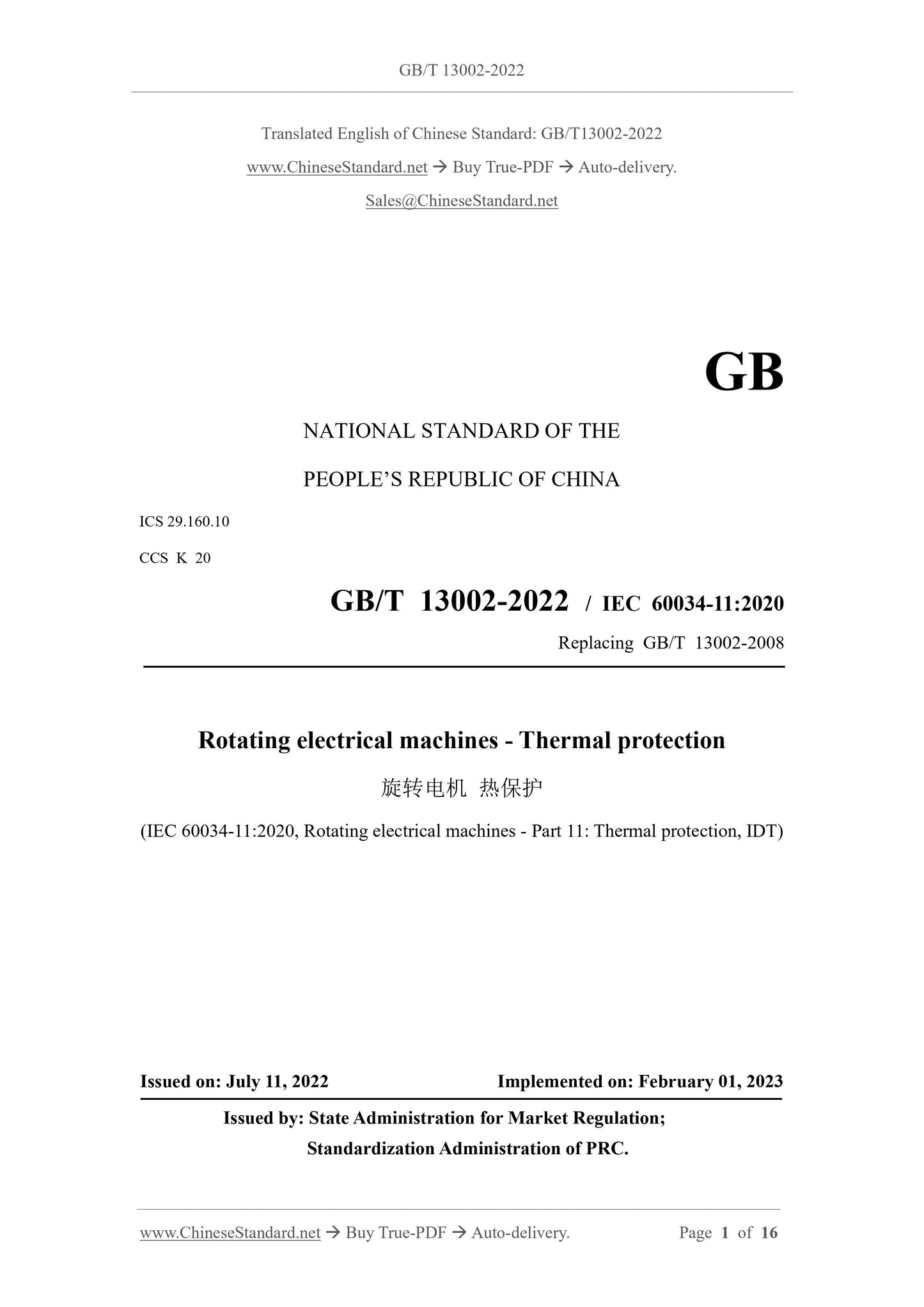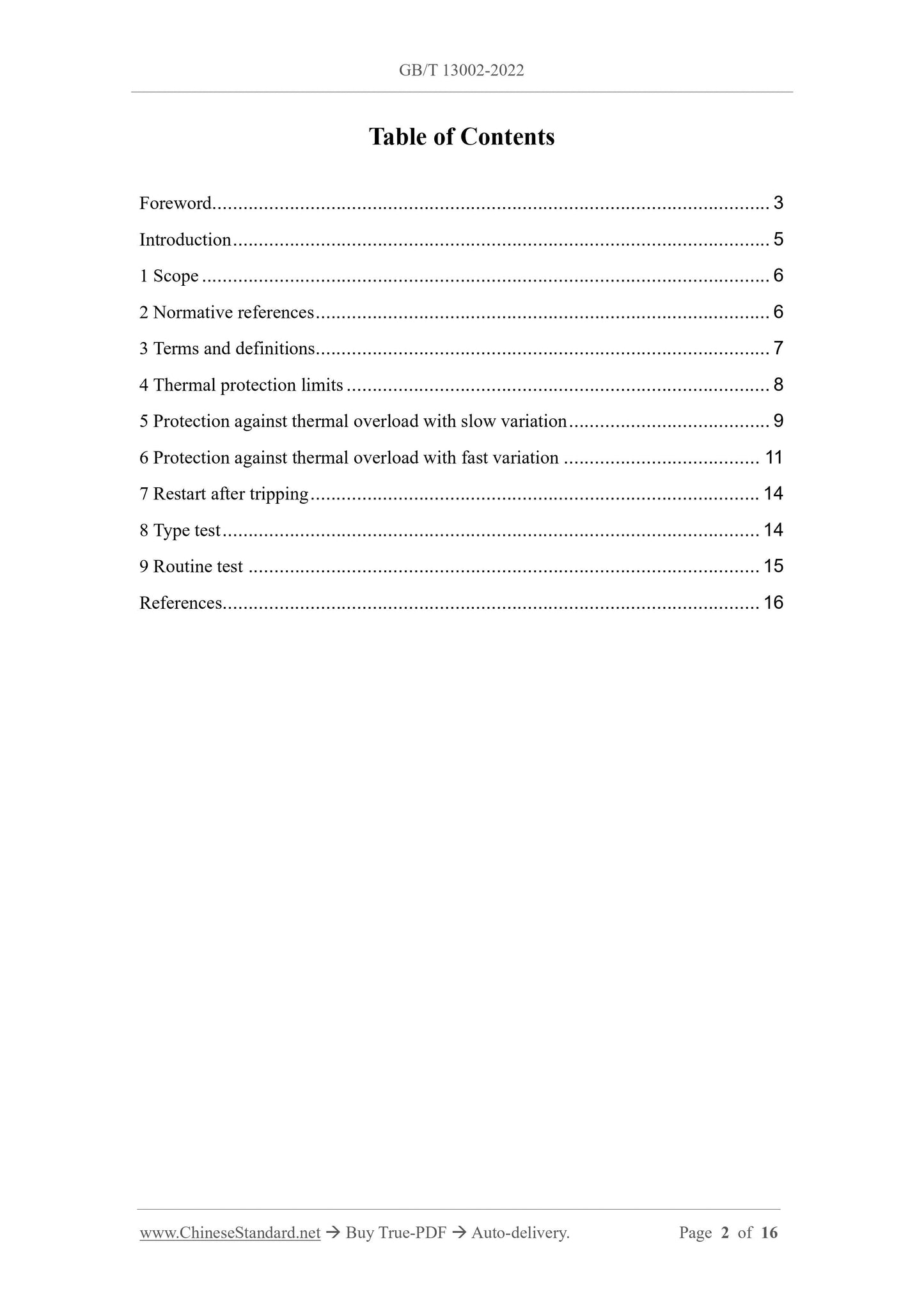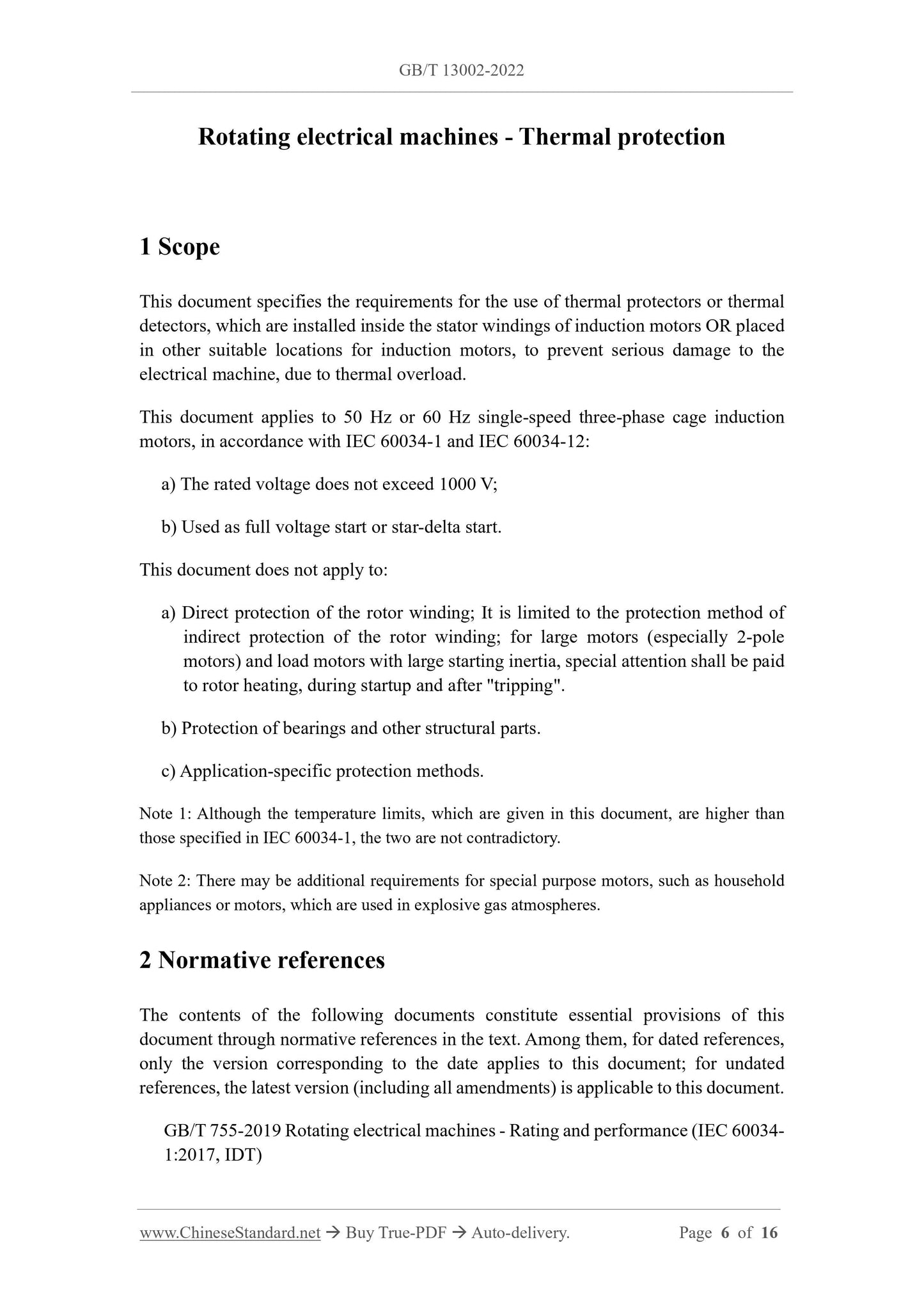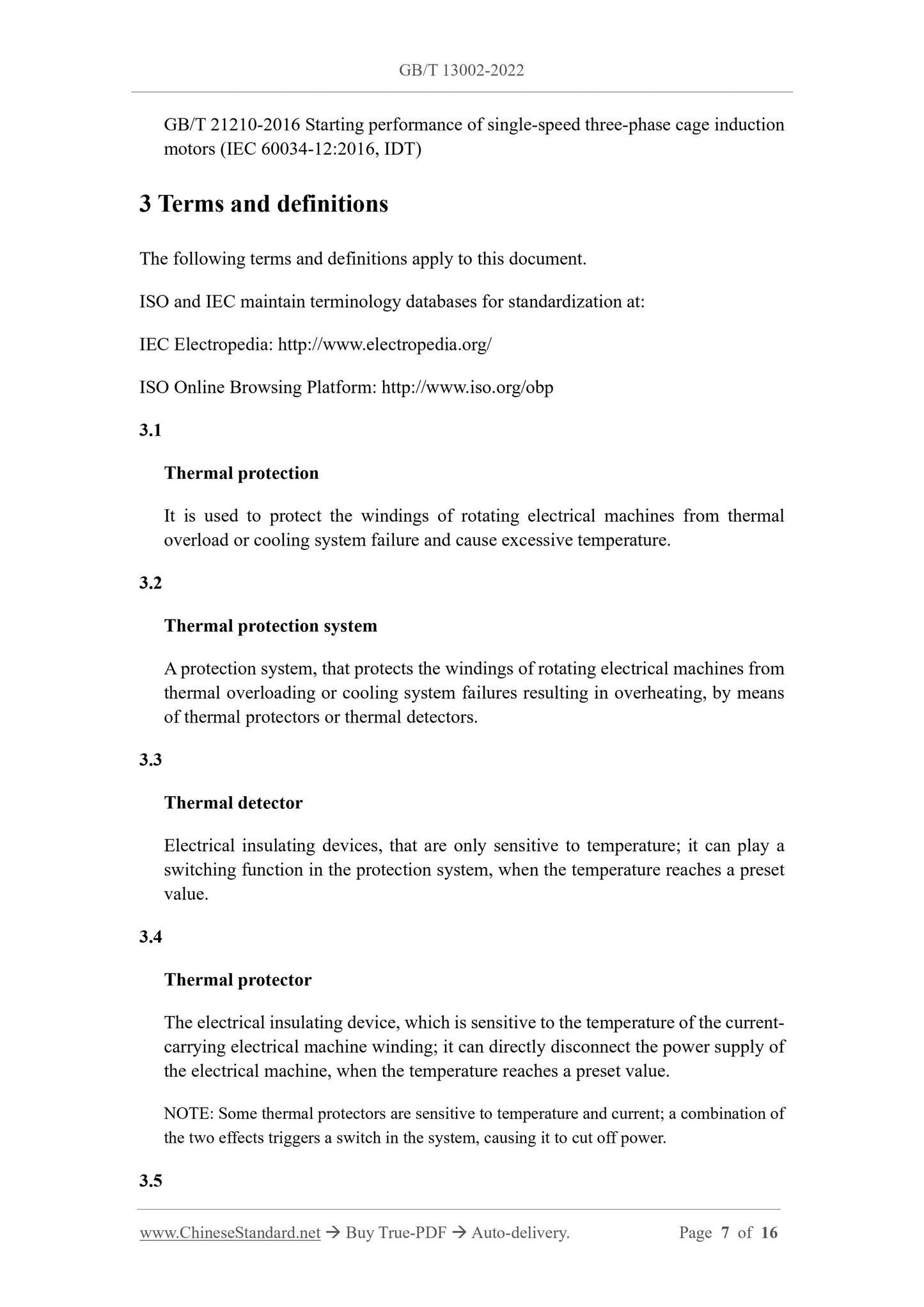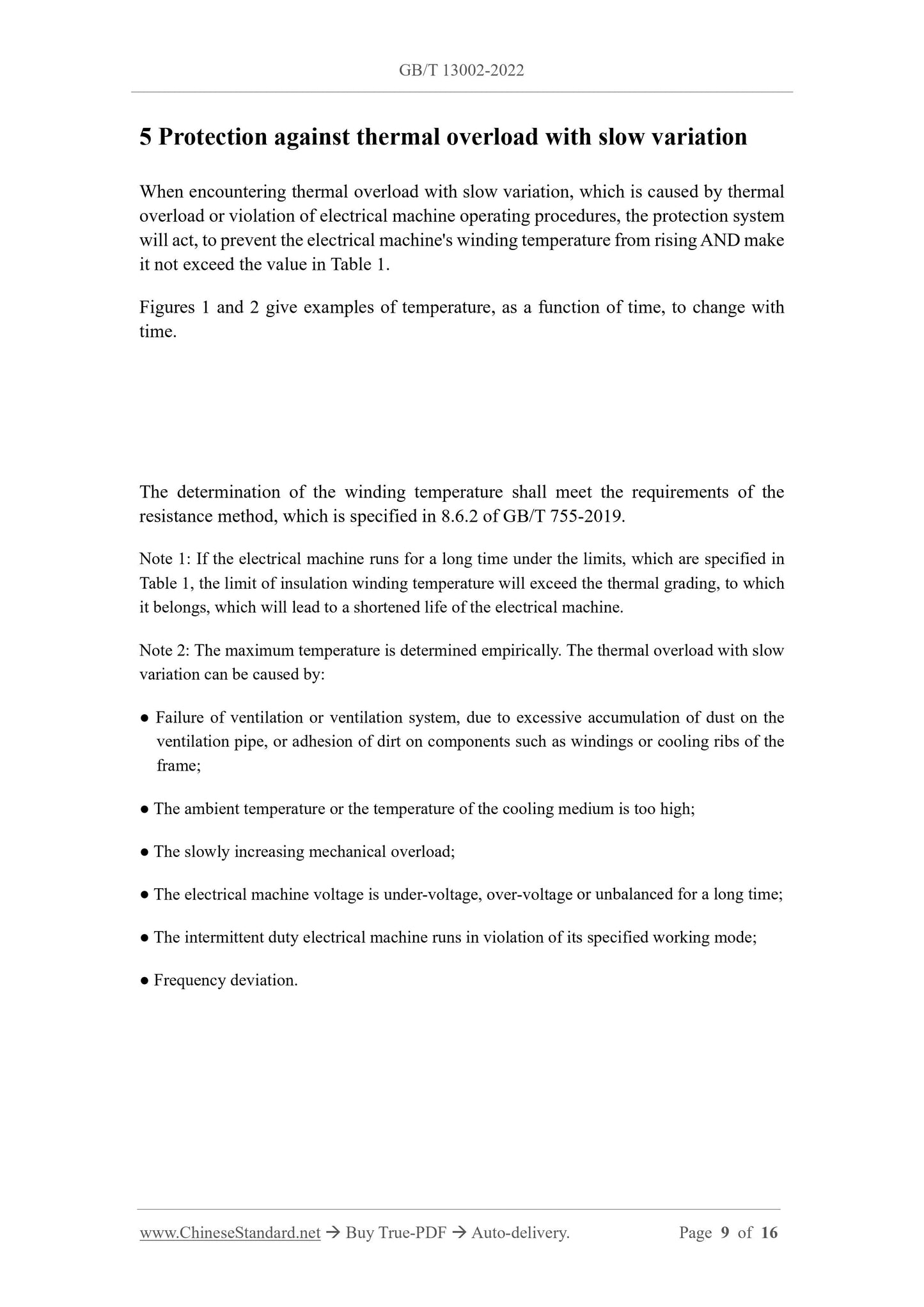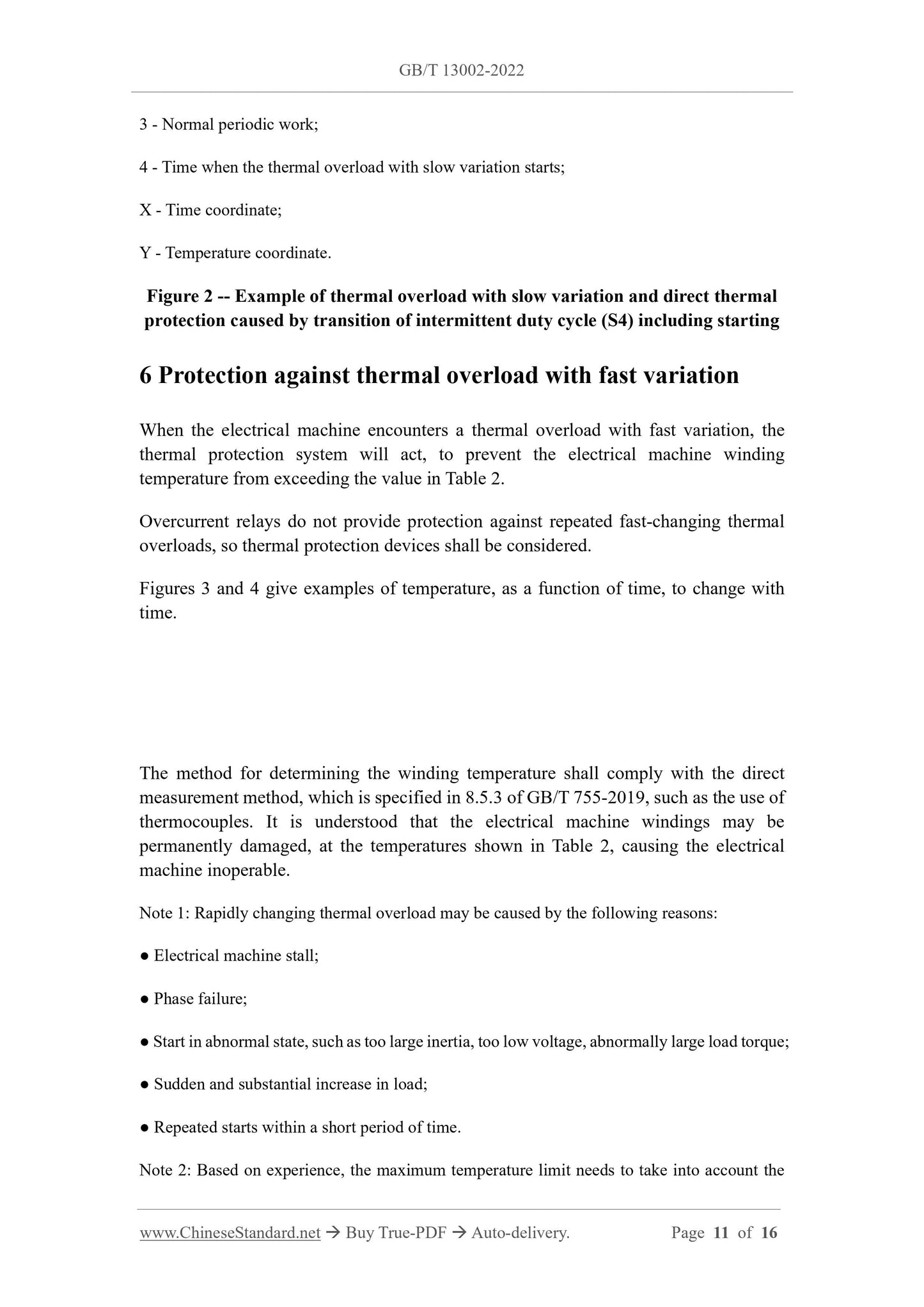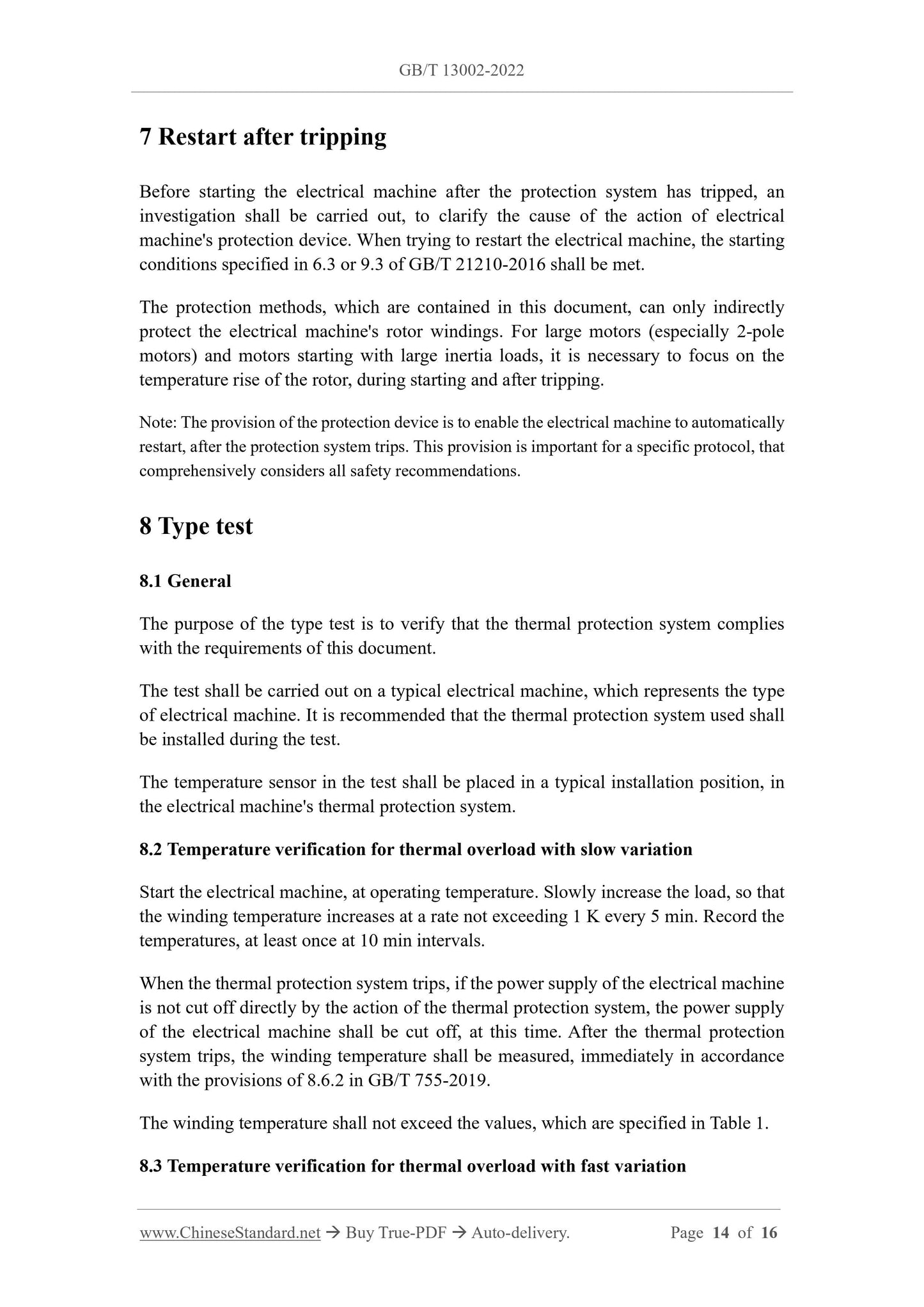1
/
of
7
www.ChineseStandard.us -- Field Test Asia Pte. Ltd.
GB/T 13002-2022 English PDF (GB/T13002-2022)
GB/T 13002-2022 English PDF (GB/T13002-2022)
Regular price
$170.00
Regular price
Sale price
$170.00
Unit price
/
per
Shipping calculated at checkout.
Couldn't load pickup availability
GB/T 13002-2022: Rotating electrical machines - Thermal protection
Delivery: 9 seconds. Download (and Email) true-PDF + Invoice.Get Quotation: Click GB/T 13002-2022 (Self-service in 1-minute)
Newer / historical versions: GB/T 13002-2022
Preview True-PDF
Scope
This document specifies the requirements for the use of thermal protectors or thermaldetectors, which are installed inside the stator windings of induction motors OR placed
in other suitable locations for induction motors, to prevent serious damage to the
electrical machine, due to thermal overload.
This document applies to 50 Hz or 60 Hz single-speed three-phase cage induction
motors, in accordance with IEC 60034-1 and IEC 60034-12:
a) The rated voltage does not exceed 1000 V;
b) Used as full voltage start or star-delta start.
This document does not apply to:
a) Direct protection of the rotor winding; It is limited to the protection method of
indirect protection of the rotor winding; for large motors (especially 2-pole
motors) and load motors with large starting inertia, special attention shall be paid
to rotor heating, during startup and after "tripping".
b) Protection of bearings and other structural parts.
c) Application-specific protection methods.
Note 1: Although the temperature limits, which are given in this document, are higher than
those specified in IEC 60034-1, the two are not contradictory.
Note 2: There may be additional requirements for special purpose motors, such as household
appliances or motors, which are used in explosive gas atmospheres.
Basic Data
| Standard ID | GB/T 13002-2022 (GB/T13002-2022) |
| Description (Translated English) | Rotating electrical machines - Thermal protection |
| Sector / Industry | National Standard (Recommended) |
| Classification of Chinese Standard | K20 |
| Word Count Estimation | 10,135 |
| Issuing agency(ies) | State Administration for Market Regulation, China National Standardization Administration |
Share
